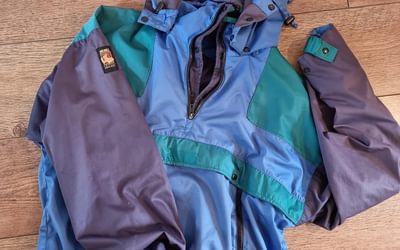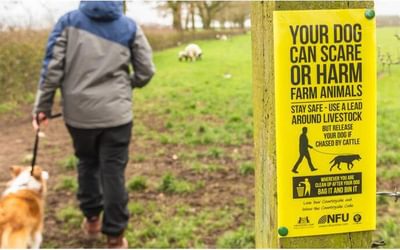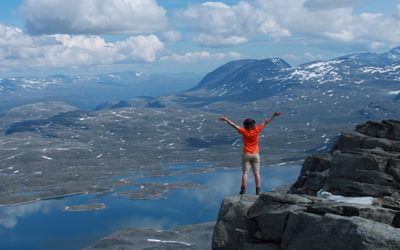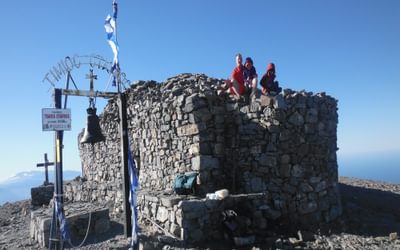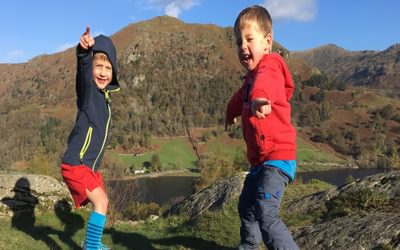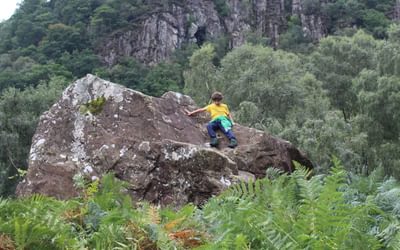How to walk with kids
What are your most vivid memories of childhood? Mine involve rockpools and dens in the woods, muddy knees and torn jeans, the breezy possibilities of heathland and the thrill of my first mountain summits. We felt like explorers. Childrens’ playfulness and their insatiable curiosity have free rein in the outdoors, and you’ll find their enthusiasm infectious.
It is often said that today’s under-exercised kids have too few adventures and precious little contact with nature. Yet growing up in London in the 80s I’d have missed out on hills and beaches, too, had my parents not made the effort to get us out and about. That’s probably true for many of us. Family walks can kindle a lifelong love of the great outdoors; indeed, walks with the kids can make for some of the most enjoyable and rewarding days you’ll ever spend. But it’s not always sunshine and smiles: get it wrong and things can rapidly go downhill. What if they grow bored or mutinous, far from home on a rain-lashed moor? How much fun are they going to have if they’re cold, hungry and tired? If walking becomes a drag then there’s a danger that they’ll be put off for life. Next time you’re out with the family, try these tips for keeping the nippers engaged and enthused.
Have realistic expectations
Parenthood changes everything, we’re told, and that is certainly true of hillwalking. Every new parent discovers this for themselves, so it inevitably came as something of a shock to us. Pre-children, our hill trips were often ambitious all-day affairs in rough, remote country. A wild camp or a scramble might have featured; there would certainly have been a big peak or three. Now simply leaving the house with a full complement of boots on is something of an achievement. Reaching a single small summit feels like the pinnacle of an expedition, and if it’s safely grassy underfoot and not too far from a car park then so much the better. Learn to accept that with a young brood in tow, bagging the In Pinn together might have to wait a few years. But tailoring the day’s expectations to suit your abilities as a family needn’t feel like a compromise: in fact it’s part of the fun. Seen through the eyes of a child even small, gentle hills take on Matterhorn-like lines, and it’s a joy to be able to share in their wonder. So start their walking career with bite-sized summits rather than biggies, easy paths instead of bogs; limit yourself to a few hours, and keep the distances manageable. When planning a walk remember it is probably easier to extend it if the kids are doing well than it is to cut short a longer circuit that’s proving over-ambitious – as they grow, so too can your walking ambitions.
With minimal coercion our girls, still only three and five, have already progressed from the tiniest of the Wainwrights to the occasional Scottish Corbett. Last week they even managed a full 8km with only one or two piggy backs. The future looks bright.
Pick a route with plenty of variety
Could your children find the patience for a long uneventful walk-in, motivated solely by a distant goal? Would they thank you for miles of featureless peat bog, or those bare rolling mountains that hide behind an endless series of undistinguished false summits? I’m sure ours wouldn’t. Walks packed with variety are better suited to short attention spans. There should be something new and interesting around every bend, be it a pretty tarn or a gurgling stream, a scrambly rock or a spooky ruin. Woodland is perfect; so too are shorelines, or the collage landscapes of rock, tarn, heather and pasture that you find among the lower hills of the Lakes, Snowdonia and Scotland’s west coast.
Let the weather shape the day
You may derive grim satisfaction from doing battle with hostile elements on stormy mountaintops, but this peculiarly masochistic way to get your kicks is very much an adult thing. Don’t impose it on the kids. With their attention otherwise occupied children can be surprisingly tolerant of wet or cold weather, but combine that with wind and they may – quite rightly – have a sense of humour failure. When planning a route it’s a good idea to base it around the day’s weather forecast. While you might reasonably head high on a promise of calm conditions, there’s a strong case for staying low if it’s stormy, snowing or pouring with rain. Woods might offer sheltered walking even when the hilltops above are decidedly unpleasant.
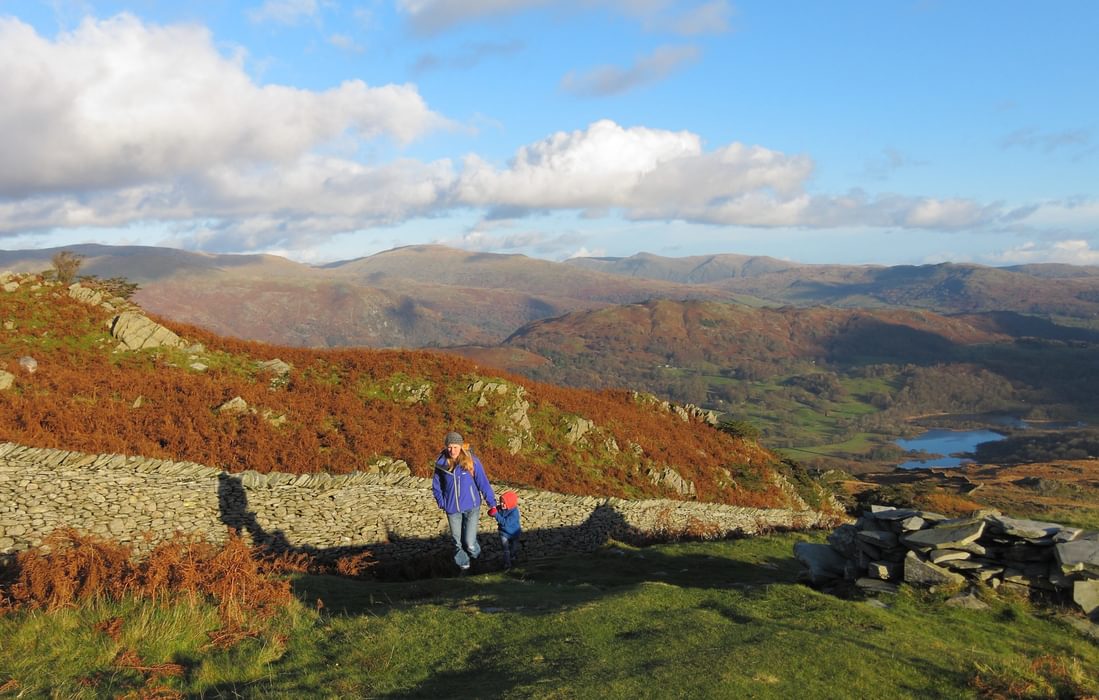
Adjust your pace to suit the child
When nippers are very small and easily carried in a backpack you still have a window of opportunity to enjoy some fairly substantial walks, and there are spells when you can stride out at an adult kind of speed. Enjoy these rare moments while they last. Remember that nappy changes, snack breaks and crawling around time all still have to be factored in. And then of course it all changes. Once they’ve learned to walk, grown too heavy to carry far, and discovered that they can set their own agenda in life, your pace as a family will slow to a stop–start amble peppered with random cul de sacs and the occasional sit-down protest. Every little thing by the wayside is fascinating to a young child, while the big picture, your planned walk from A to B, must seem abstract at best. Puddles are for splashing in, after all, and rocks for climbing on. And who could resist the simple delights of sheep poo and a stick? Don’t get frustrated: this is all part of the game. As they mature children soon begin to grasp the concept of a purpose. By the age of about three, in our experience, they can be persuaded to walk in one particular direction for minutes on end.
Let them have some input
Little’uns may unquestioningly tag along wherever you lead them, but as they grow up and become increasingly self-possessed kids naturally like to feel that their views carry some weight. This starts pretty early, if ours are anything to go by. Involve junior team members in decision making, both at the planning stage and out on the trail, and it ought to help them view the walk as a common endeavour rather than an imposition. Give them a shot with maps and compasses, walking poles and bothy bags. At first they’ll merely be playing, but hopefully something will be sinking in, helping to lay a groundwork for future skills.
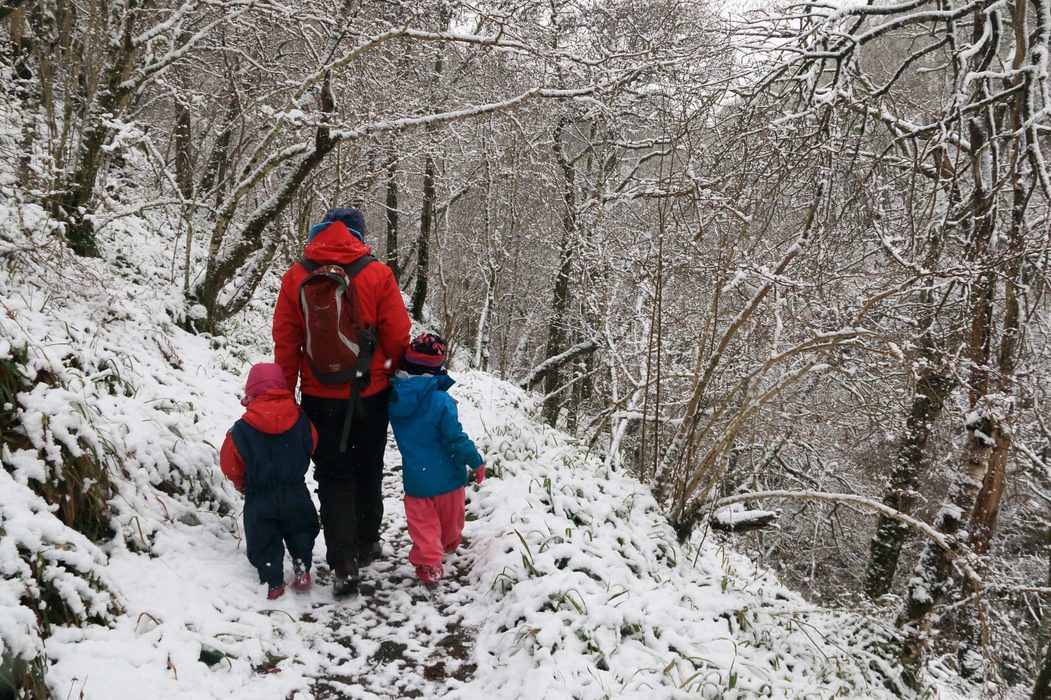
Expect some moaning
Barely a day goes by in the Bailey household without a bit of a moan or a good honest strop (and that’s just the grown-ups). Kids are masters at making a fuss over nothing, and quite capable of finding spurious grounds for complaint on any walk. More often than not it’ll all be forgotten in a few minutes, but when a bout of stubborn moodiness does take hold we’ve had some success with bribery (chocolate, not cash) and distraction (there’s a fish in that tree. Or is it a bird?). If nothing works then it’s always possible they have a genuine grievance. Maybe they really do have ‘a hurting foot’; perhaps their tights really are ‘all runkled up’.
Kit them out properly
How often have you seen it? A parent, most likely the father, cheerfully striding out decked to the nines in hundreds of pounds worth of Gore-Tex and Polartec, while the child shambles miserably alongside wearing a damp cotton sweatshirt and leaky trainers. Children need gear that’s fit for the outdoors every bit as much as adults. Admittedly it’s hard to keep up with the clothing needs of an ever-growing sprog. It’s potentially expensive, if you’re buying everything brand new and top-of-the-range. So don’t. Go for second hand charity shop clothing and hand-me-downs wherever possible, and cut a few corners with cheapies where the branded stuff isn’t sufficiently better to justify the price tag (socks, gloves, hats, fleeces). That said, two key items that are worth investing in are waterproofs and footwear. They’ll enjoy the day far more with warm, dry feet. Wouldn’t you? But despite your best efforts to clothe them properly there are times when the little darlings simply won’t leave the car without those awful cheap supermarket wellies, just because they’re pink.
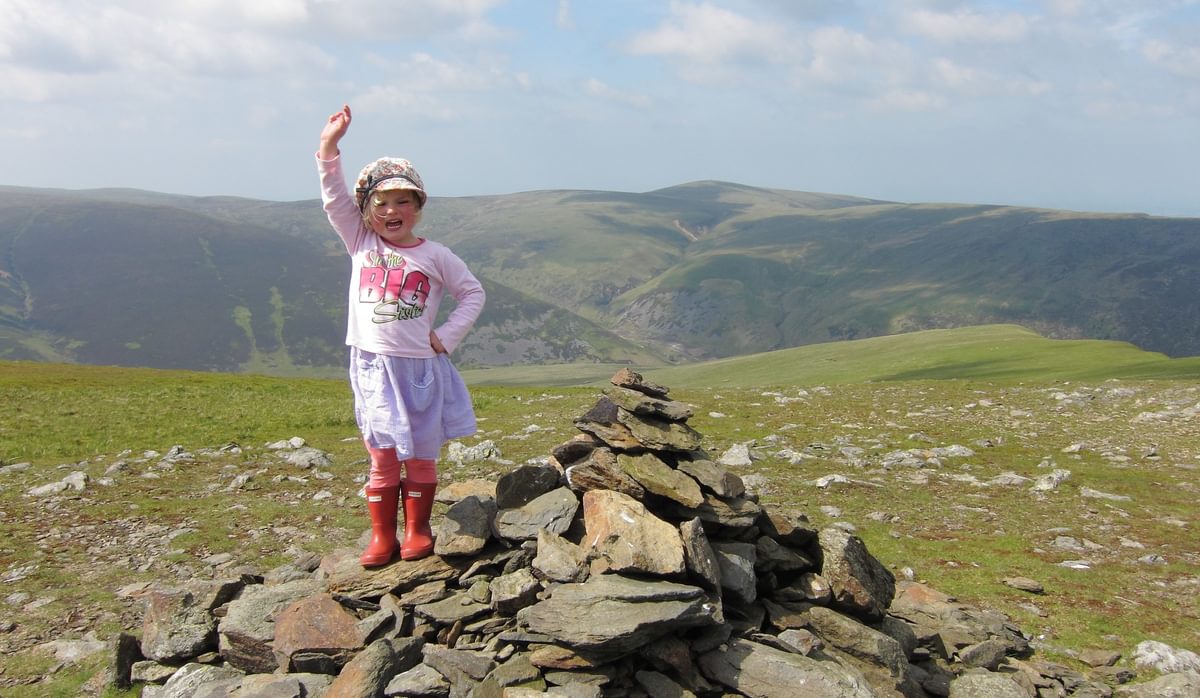
Food for fuel and as a reward
Growing bodies burn though calories at an impressive rate, and doubly so when exercising in the fresh air. Since an army marches on its stomach it is always better to over-cater than to starve the troops. Frequent food breaks are a must, with plenty of snacky high-energy stuff that’s easily eaten outdoors (nuts and raisins, cereal bars, sandwiches, sausage rolls, fruit, crisps). Supplement the savoury fare with a generous supply of sweets, preferably small stuff such as jelly babies that can be handed around on the go. As well as being vital fuel, food provides an effective injection of morale. Use it to stave off bad moods, or eke it out as a series of little rewards for getting to the next stile or bend in the path. Hidden in the crook of a branch or behind a rock, sweets can even be used in an energy-boosting treasure hunt that keeps the forward momentum going.
Tell tall tales
Have you heard the one about the old witch of Glen Lednock who washed her hair in the waterfall? Or the giant that lived on Lingmoor Fell? Did you know that Stac Pollaidh was actually a spiny dragon turned to stone? Neither did we until we made it up to entertain a flagging child. With their attention distracted by stories kids can happily trot along without even noticing the distance they’re covering. You don’t have to be Roald Dahl or JK Rowling, but weaving the place names and landmarks seen on your walk into some kind of narrative seems to help the audience engage with their surroundings on an imaginative level. Of course a 10 year old is going to find this sort of thing deeply lame: perhaps they might be more interested in genuine facts about the history, geology or ecology of the area? You don’t want to turn the day into a dry pedagogical lecture, but it might be worth coming fore-armed with a bit of prior research.
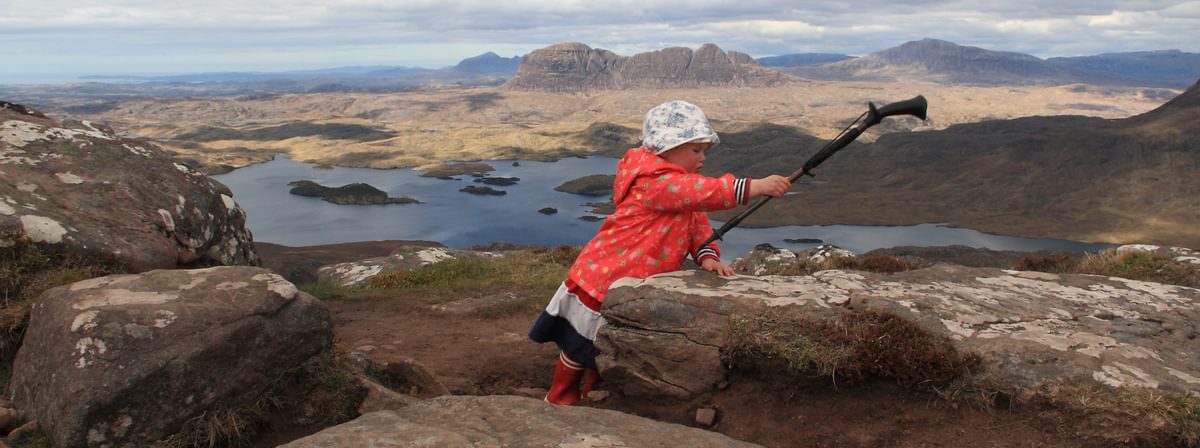
Make it all a game
Games help top up the enthusiasm, and if you manage to incorporate them into the landscape then they can be a good way for children to interact with their surroundings too. Use whatever you find around you: racing Pooh sticks, sending the young’uns on a natural obstacle course, or building a snowman. Hide-and-seek is a good one for smaller people, particularly if you can steer the game along the path in the direction you all want to be heading.
Allow just a bit of danger…
The opinion seems to be gaining ground that if we seek to eliminate risk altogether from childrens’ lives then we deny them vital life-enriching experiences, and the chance to learn to take responsibility for themselves. A little danger – and I do mean within managed bounds – is surely the essence of childhood. Let them fall and scrape their knee; climb that tree; clamber on the rocks; and if they insist on splashing in a lochan in April then they can by all means try. The key has to be ensuring that any activity remains within bounds appropriate to your child’s abilities. As the responsible adult it is vital that you understand the possible risks of the setting, and how to manage them. You wouldn’t permit a paddle in a fast flowing river just upstream from a waterfall, for instance, and yet it might be perfectly justifiable below the falls. Think twice before venturing onto scrambling terrain or snow slopes, both places where ill-prepared family groups occasionally get into trouble through basic ignorance on the part of the parents.
…but keep an eye on their welfare
Dramatic possibilities aside, children are more likely to come to grief in the outdoors through simply being cold and tired. Youngsters are resilient, but only up to a point. Their reserves of energy and endurance are soon used up, and the slide from perfectly fine to borderline hypothermic can be alarmingly sudden. Wet or windy weather are the main enemies, particularly for smaller children. This goes double for babies sat still and cold in a child carrier while you’re working up a sweat, oblivious to their predicament.
In cold conditions make sure kids are dry, well layered-up, and properly fed. If you’re up high in the open and they start showing signs of being worryingly chilled, get them down into the lee of the hills without delay. I speak from experience.
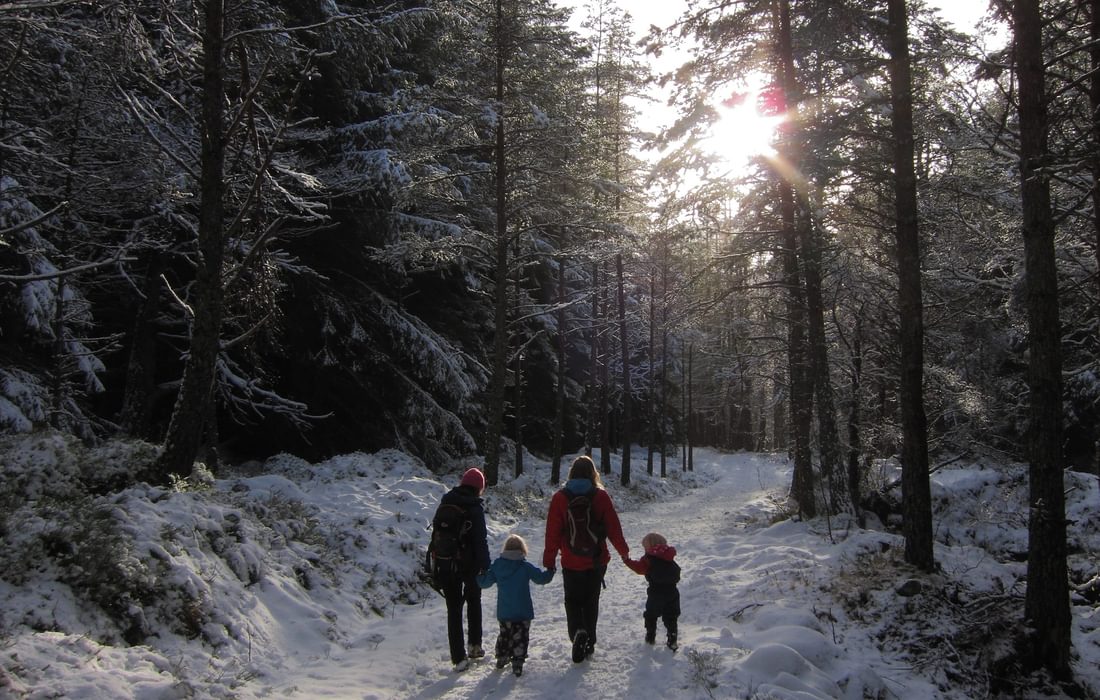
Outdoor Adventures with Children - Lake District
40 family days with under 12s exploring, biking, scrambling, on the water and more
£12.95
Guidebook to 40 outdoor adventures in the Lake District with children under 12, including walking, cycling, orienteering, paddling, boating, hostelling and more. Graded activities for varying age ranges or for families with children of different ages.
More informationTo read more articles like this get our newsletter
Sign up for 20% off your next purchase and to be the first to hear about exclusive competitions, special offers, and news from Cicerone.








